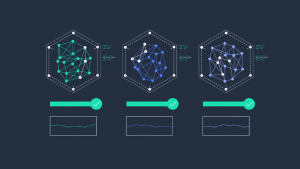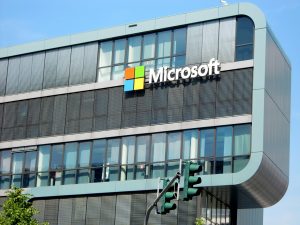Oracle’s new Sparc M7 chip delivers ‘ten times faster’ performance boost
![]() Oracle Corp’s overarching message at this year’s Oracle OpenWorld event might be all about the cloud, but that doesn’t mean it’s keeping quiet in its hardware business.
Oracle Corp’s overarching message at this year’s Oracle OpenWorld event might be all about the cloud, but that doesn’t mean it’s keeping quiet in its hardware business.
During his OpenWorld keynote on Sunday night, Oracle’s undisputed leader Larry Ellison revealed the company is still heavily invested in the Sparc processor technology it acquired along with Sun Microsystems back in 2010. The latest generation – Sparc M7 – is set to launch sometime next year, and in the words of Ellison is, “the most important thing we’ve done in silicon, maybe ever.”
We got a first glimpse of what to expect at the Hot Chips conference last August when Oracle’s Systems Vice President John Fowler described the CPU as having 32-cores with 64MB of on-chip L3 cache. The chips, he said, could easily be stacked into a 32-way SMP configuration to give a total of 1,024 cores offering up to 64 terabytes of RAM.
But according to Ellison, what makes the Sparc M7 really, really special are the so-called “acceleration engines” baked inside that are specifically designed to speed up Oracle apps.
“We’ve actually put database acceleration engines into our microprocessor, and with that we can speed up query performance by a factor of ten,” Ellison claimed.
The Sparc M7 achieves this by handling the compression inside the silicon. “It turns out you compress when you load the data into memory, and you decompress when you read the data and process the data,” said Ellison. “It turns out the ratio of reading and decompression is many times, ten times more frequent than loading the data into memory. So the real magic to speeding things up is not compression, it’s decompression.”
This allows the Sparc M7 to process database queries at a lightening-fast 120GB a second – according to Ellison, that’s ten times faster than what conventional hardware and software solutions can manage.
Ellison also boasted of the chip’s new memory protection capabilities that prevent apps from accidently deleting data or causing problems with other applications.
“The failures are intermittent; they’re extremely hard to trap, they’re extremely hard to trace,” he said. “With memory protection, you can discover those bugs really early, so it saves you a fortune finding really difficult bugs. But the cool thing about it is because it’s in hardware, you can leave this memory protection on without paying any performance price.”
Those are some pretty impressive claims, but critics have already slammed Oracle for being late to the game.
“Apparently, Oracle has finally copped to the reality that this 30+ year old DBMS is slow,” Aaron Auld, CEO of rival database firm EXASOL, told SiliconANGLE. “Oracle’s answer to the inadequacies of their foundational 12c product is “silicon” and lots of it. This M7 chip is going to be the ultimate Oracle lock-in strategy. Oracle will begin embedding parts of the database software in these proprietary ASICs.”
Even if this is all part of Oracle’s lock-in strategy, it’ll take some time for customer’s sentences to be handed down. Ellison refused to be drawn on a release data for the Sparc M7, saying only that it would be available sometime next year.
photo credit: Grand Parc – Bordeaux, France via photopin cc
A message from John Furrier, co-founder of SiliconANGLE:
Your vote of support is important to us and it helps us keep the content FREE.
One click below supports our mission to provide free, deep, and relevant content.
Join our community on YouTube
Join the community that includes more than 15,000 #CubeAlumni experts, including Amazon.com CEO Andy Jassy, Dell Technologies founder and CEO Michael Dell, Intel CEO Pat Gelsinger, and many more luminaries and experts.
THANK YOU













